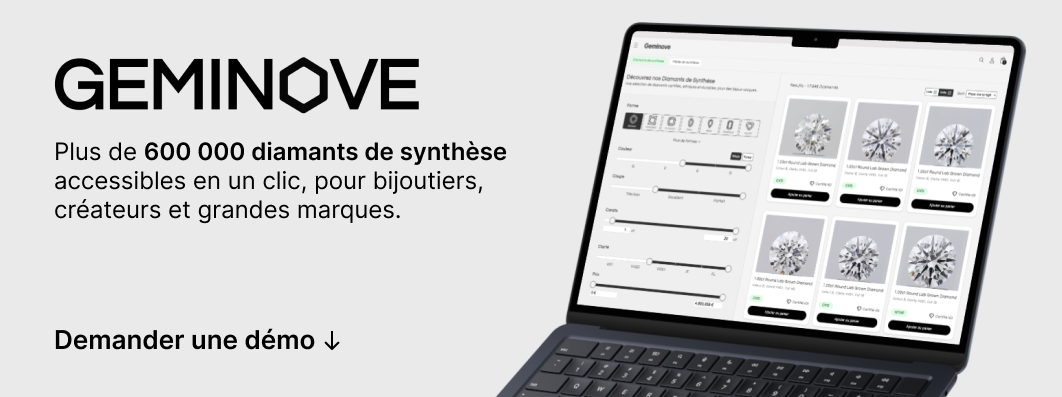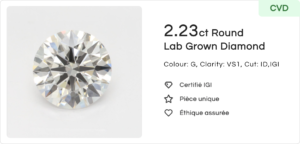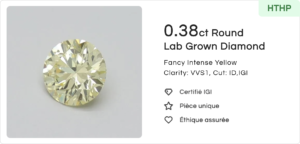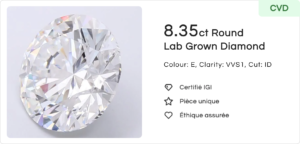A BRILLIANT REVOLUTION FOR A MORE ETHICAL JEWELRY INDUSTRY
Everything You Need to Know About Lab-Grown Diamonds
Lab-grown diamonds are attracting growing interest among jewelry enthusiasts and environmentally conscious consumers. But what exactly is a lab-grown diamond—and why is it making such waves? In this article, we explore the definition, characteristics, and rising significance of these lab-created gemstones.
What Is a Lab-Grown Diamond?
A lab-grown diamond is a gemstone created artificially in a laboratory, but it shares the exact same physical, chemical, and optical properties as a mined diamond. Unlike imitations such as cubic zirconia or moissanite, lab diamonds are real diamonds made of crystallized carbon with a cubic crystal structure.
A Brief History of Lab Diamonds
Attempts to create synthetic diamonds date back to the 19th century, but it wasn’t until the mid-20th century that scientists succeeded in producing usable stones. General Electric was the first company to commercialize lab-grown diamonds in 1954, initially for industrial applications such as cutting and drilling.
How Are Lab-Grown Diamonds Made?
Lab diamonds are produced by replicating the extreme conditions in which natural diamonds form deep within the Earth. Two primary methods are used:
-
HPHT (High Pressure High Temperature) This technique mimics the intense heat and pressure that forms diamonds in nature. Carbon seeds are placed in a press where they crystallize into diamonds.
-
CVD (Chemical Vapor Deposition) In this process, carbon atoms are deposited onto a substrate inside a vacuum chamber, bonding layer by layer to form a diamond.
- Did You Know ?
According to Frost & Sullivan, the global lab-grown diamond market is expected to hit $29.2 billion by 2025, with an average annual growth rate of 9.4%. A clear sign that sustainable and ethical sourcing is no longer optional—it’s the future.
How Do Lab Diamonds Differ from Natural Diamonds?
Although lab-grown and natural diamonds are identical in composition, their origins give lab diamonds several advantages. While natural diamonds take millions of years to form underground, lab diamonds can be created in a matter of weeks under controlled conditions, making them an ethical, eco-friendly, and consistent option.
Why Are Lab-Grown Diamonds Gaining Popularity?
Ethical & Environmental Impact
Lab-grown diamonds offer a more sustainable and ethical alternative to mining. By eliminating harmful mining practices, they provide an option that respects both the environment and human rights.
Attractive Pricing
Lab diamonds are typically 20% to 40% cheaper than their natural counterparts. This pricing advantage enables customers to purchase higher-quality pieces at more accessible prices.
Customization Possibilities
Laboratories can precisely control the size, color, and clarity of each diamond, opening up endless possibilities for bespoke jewelry creation.
The Future of Lab-Grown Diamonds
As technology evolves and awareness of ethical and environmental issues grows, lab-grown diamonds are becoming increasingly prominent in the jewelry market. They are gaining traction among younger generations and luxury buyers who care about their ecological footprint.
Lab-grown diamonds represent a true revolution in the world of precious stones. By offering an ethical, ecological, and economical alternative, they are the smart choice for the modern consumer—whether you’re looking for an engagement ring or a one-of-a-kind piece.
The diamonds of tomorrow,
certified and ethical, available today.
Join the first dedicated marketplace for lab-grown diamonds and access 600,000+ certified stones, direct from source, at the best prices exclusively for professionals.
More Articles You Might Like
Explore a curated selection of articles designed to help you stay ahead of market trends, innovation, and best practices in lab-grown diamond sourcing.

Démo Geminove Marketplace
Remplissez ce formulaire pour demander une démonstration personnalisée de notre plateforme. Un membre de notre équipe vous contactera.






